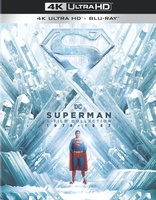More a 'signal' than a standardized display these days, 1080i refers to the
'interlacing' of two 540 pixel 'fields' into a 1080 total pixel image.
For movie content at 24p (24 frames per second), quality de-interlacing can produce a very high quality image - near or as good as 1080p. For VIDEO based content, with its higher inherent frame rate (60 frames per second, typical), your results will vary, but it still usually maintains very high quality. Interlaced video tends to have more visual artifacting as one field may stagger its motion in relation to the next field, but again, quality de-interlacing by a quality video processor can all but eliminate this.
720p and 1080p signals are
'progressive' in nature, meaning each frame is displayed immediately without separate fields to interlace together. The motion is inherently smoother, but, in the case of 1080p, twice the digital video bandwidth is required to display the full frames in real time. That's why 1080p is the latest consumer-grade technology out there - it's the best at the consumer level, and is the current standard for Blu-ray video. Cable and satellite receivers generally only receive 1080i video or 720p video at best, due to the lower bandwidth (and reduced data management) required to carry them.
To be sure, a properly displayed 1080i image can yield better visual resolution than a 720p image - because you get more pixels in the end result. Adherents to the superiority of 720p do have a point - the motion of 720p can be smoother in appearance, which can yield superior imagery in faster-motion video, such as sports and action videos.
Then, enter the world of pulldown conversion in conjuction with 1080i (or any interlaced video) on a 60Hz television display (and for that matter, progressive video as well). That's another topic, but is closely related to the quality of the motion smoothness and video quality!

Wow, I hope that wasn't too confusing. I did try to make it as simple as possible. You can search these forums for more information. I'm sure there will be more responses on this very fascinating subject.



























 Linear Mode
Linear Mode

